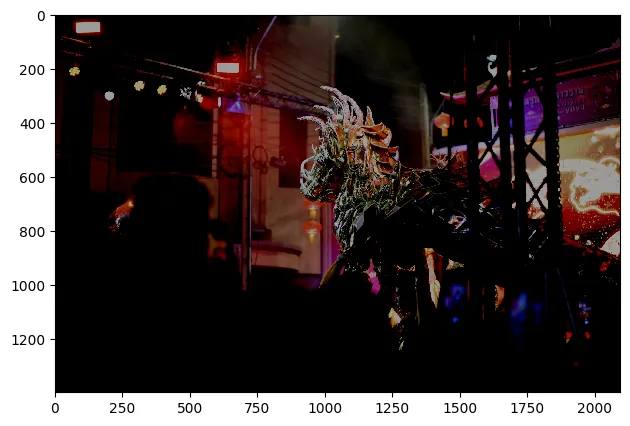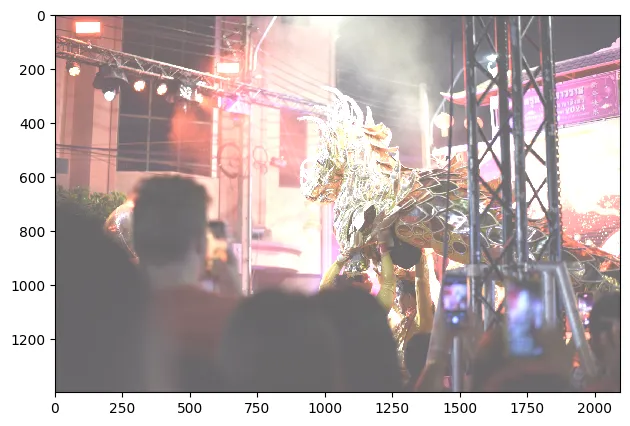
Introduction
Image brightness is a fundamental aspect of photography that significantly influences the visual appeal and clarity of pictures. Whether capturing a serene landscape, a vibrant cityscape, or a memorable portrait, the brightness of an image can enhance its overall impact and convey the desired mood. Properly adjusted brightness brings out details that might otherwise be lost, highlights the subject, and ensures that the image resonates with viewers.
In the digital era, photographers and image enthusiasts often rely on software tools to fine-tune their images. While many photo editing applications provide intuitive sliders and presets for brightness adjustment, understanding the underlying mechanics can offer greater control and customization. Python, a powerful and versatile programming language, opens up a world of possibilities for image manipulation through its robust libraries and tools.
In this blog post, we will delve into the science behind image brightness, focusing on the pixel values that make up an image and how they can be manipulated to achieve the desired effect. By leveraging the capabilities of NumPy, a fundamental package for scientific computing in Python, we will explore how to manually enhance the brightness of images at the pixel level. This approach not only provides a deeper understanding of image processing but also equips you with the skills to implement custom brightness adjustments tailored to specific needs.
We will start by understanding the basics of pixel values and the role of RGB channels in defining an image's color and brightness. Then, we will move on to practical implementations, demonstrating how to load images, manipulate pixel values, and apply brightness adjustments using NumPy. Throughout the process, we will emphasize the importance of clipping values to maintain the integrity of the image and prevent distortion.
By the end of this tutorial, you will have a comprehensive understanding of how image brightness works and how to control it using Python and NumPy. Whether you are a photographer looking to enhance your photos or a developer interested in image processing, this guide will provide you with the tools and knowledge to achieve professional results. So, let's dive in and unlock the potential of your images through the power of Python and NumPy.
Understanding Image Brightness
Image brightness refers to the overall lightness or darkness of an image. It is determined by the intensity of light emitted or reflected from the image. In digital images, brightness is represented by the values of pixels, which are the smallest units of a picture.
A pixel's value in an image represents its color and intensity. In a grayscale image, a pixel value ranges from 0 (black) to 255 (white). Values between 0 and 255 represent different shades of gray, forming a gradient from black to white. For example, a pixel value of 127 represents a medium gray, whereas values closer to 255 are lighter shades of gray, and values closer to 0 are darker shades of gray.
For colored images, pixels are represented by three values corresponding to the Red, Green, and Blue (RGB) channels. Each channel can have a value between 0 and 255. These values are typically stored as tuples. For instance, a pixel with RGB values (255, 0, 0) will be represented as a tuple (255, 0, 0), which corresponds to pure red. Similarly, a pixel with RGB values (0, 255, 0) will be pure green, and (0, 0, 255) will be pure blue. When all three channels have the same value, the result is a shade of gray. For example, (127, 127, 127) as a tuple represents a medium gray.
By combining different intensities of these three primary colors stored in tuples, a wide spectrum of colors can be created, allowing for rich and detailed images.
- Red Channel: Controls the intensity of red hues.
- Green Channel: Controls the intensity of green hues.
- Blue Channel: Controls the intensity of blue hues.
By manipulating these values, we can control the brightness and color of an image.
Tools and Libraries
We will use NumPy, a fundamental package for scientific computing in Python. NumPy provides support for large multi-dimensional arrays and matrices, along with a collection of mathematical functions to operate on these arrays. Additionally, we will use skimage (Scikit-Image), a collection of algorithms for image processing in Python.
Step-by-Step Guide to Adjusting Image Brightness
We will use the skimage library to load and convert the image into a NumPy array.
Example Code:
from skimage import io
import numpy as np
# Load an image from file
image = io.imread('path_to_image.jpg')
To enhance brightness, we need to increase the value of each pixel. However, care must be taken to ensure that the values do not exceed 255, the maximum value for a pixel in an 8-bit image.
Example Code:
def increase_brightness(image_array, value):
# Convert image to float to prevent overflow
image_array = image_array.astype(np.float64)
# Increase brightness
image_array += value
# Clip values to ensure they lie between 0 and 255
image_array = np.clip(image_array, 0, 255)
# Convert back to uint8
return image_array.astype(np.uint8)
We can now use the above function to manually adjust the brightness of the image.
Example Code:
bright_image_np = increase_brightness(image, 50)
# Display the brightened image using skimage
io.imshow(bright_image_np)
io.show()
The Science Behind Pixel Manipulation
When we talk about increasing the brightness of an image, we are essentially increasing the intensity of light that each pixel emits. This is done by adding a constant value to each of the RGB channels.
Example:
- Original Pixel Value: (100, 150, 200)
- Brightness Increase: 50
- New Pixel Value: (150, 200, 250)
| -100 | 0 | +100 |
|---|---|---|
 |  |  |
By applying this transformation uniformly across the image, we increase the overall brightness while preserving the relative differences in intensity between pixels.
Clipping ensures that the pixel values remain within the valid range (0 to 255). Without clipping, adding a high brightness value could result in overflow, leading to incorrect and distorted pixel values.
Practical Applications of Brightness Adjustment
Brightness adjustment is essential in various fields and applications:
Photography and Graphic Design:
Adjusting brightness is a common task in photo editing to enhance visual appeal. Photographers often increase brightness to highlight details or decrease it to create moodier effects.Medical Imaging:
In medical imaging, brightness adjustment can help in visualizing structures and abnormalities in X-rays, MRIs, and CT scans. Proper brightness levels can reveal critical details that are otherwise difficult to discern.Surveillance and Security:
Brightness adjustment in surveillance footage can improve visibility in low-light conditions, aiding in the identification of objects or individuals.Scientific Research:
Scientists adjust brightness in images from microscopes, telescopes, and other imaging devices to enhance visibility and contrast, facilitating better analysis and interpretation.
Future Topics
Stay tuned for more blog posts on exciting topics related to computer vision and photography. In upcoming posts, we will explore various techniques such as edge detection, line detection, contrast enhancement, and much more. These topics will provide deeper insights into the fascinating world of image processing and how you can leverage Python to create stunning visual effects and extract meaningful information from images. Keep an eye out for these tutorials to further expand your skills in computer vision and photography!